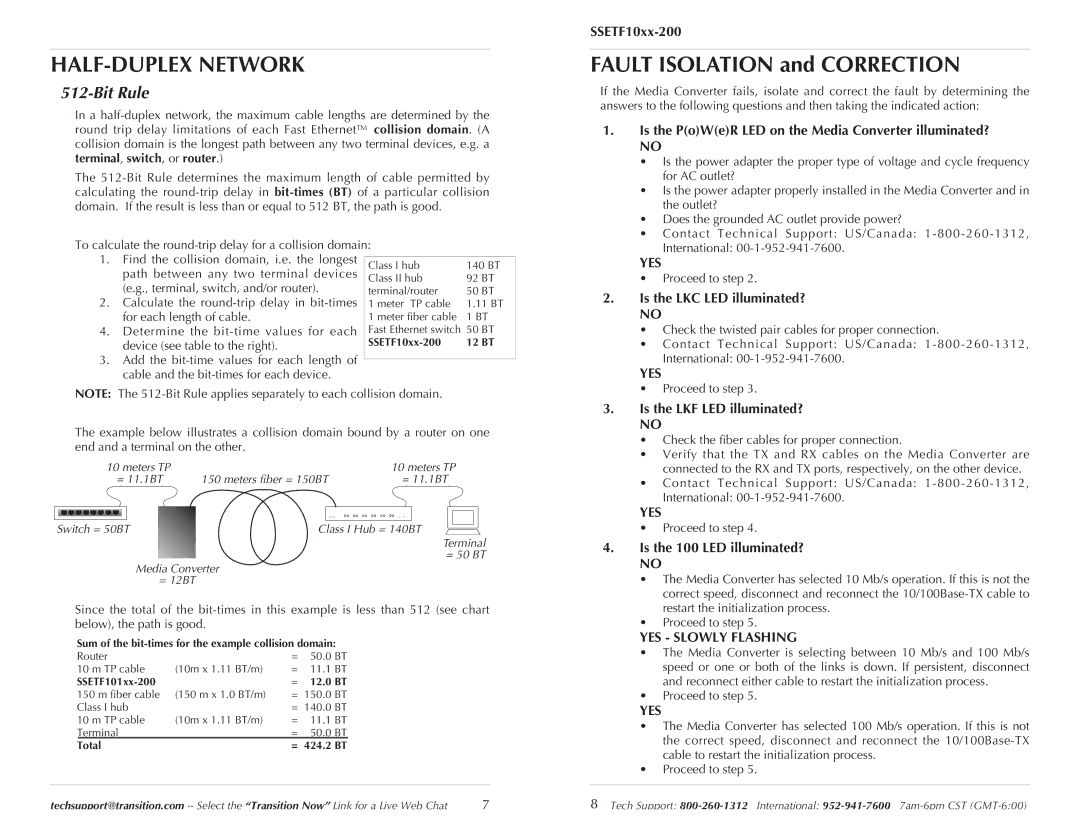SSETF10XX-200 specifications
The Transition Networks SSETF10XX-200 is a versatile media converter designed to facilitate the seamless integration of fiber optic and copper networking environments. This device stands out as an essential tool for businesses aiming to extend their network capabilities while maintaining reliability and performance. The SSETF10XX-200 is particularly adept at converting 10/100/1000 Mbps Ethernet signals over both fiber and copper, providing flexibility for various networking setups.One of the key features of the SSETF10XX-200 is its support for auto-sensing. The media converter automatically detects the network speed and adjusts accordingly, allowing for an effortless transition between different types of Ethernet connections. This capability enhances its usability in diverse network settings, ensuring that users enjoy hassle-free operation without manual intervention.
The SSETF10XX-200 utilizes advanced technologies such as store-and-forward packet switching, which helps optimize data flow and minimize packet loss. This feature is crucial for environments where maintaining the integrity of data transmission is vital, such as in multimedia applications or real-time communications. Moreover, the media converter can handle both half-duplex and full-duplex modes, accommodating varied networking arrangements.
In terms of physical characteristics, the SSETF10XX-200 boasts a compact design that allows for easy installation in various locations, including data centers and office environments. It is equipped with LED indicators that offer real-time monitoring of power, link status, and data transmission activity. This visibility simplifies troubleshooting and aids network administrators in managing their systems effectively.
The durability of the SSETF10XX-200 is another notable aspect, as it is built to withstand the rigors of continuous use in demanding settings. Transition Networks has engineered this media converter to comply with stringent environmental standards, ensuring reliable performance even in challenging conditions.
Overall, the Transition Networks SSETF10XX-200 media converter is a robust solution for organizations seeking to enhance their networking capabilities. With its automatic speed detection, packet switching technology, and durable design, it provides an efficient way to bridge the gap between fiber and copper networks, making it an invaluable addition to any organization's infrastructure.

